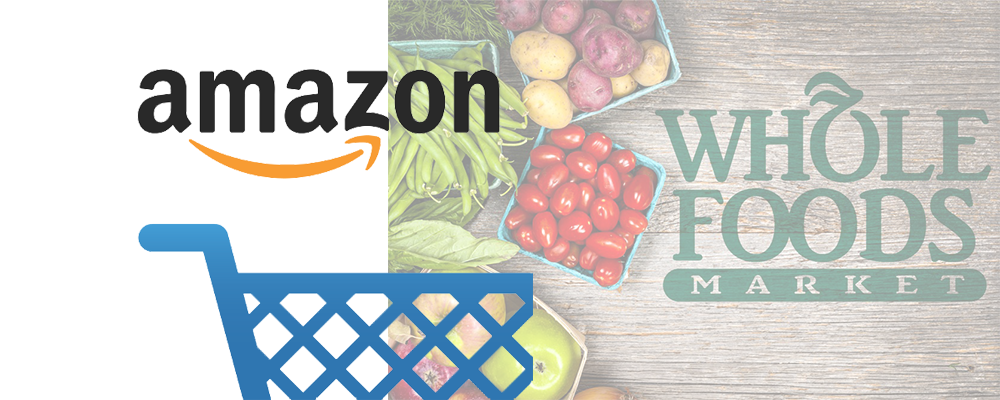
What does the Amazon-Whole Foods Merger mean for the Supply Chain world?
Amazon, in a revolutionary move, has acquired Whole Foods Market and its 436 stores nationwide for a cool $13.7 billion. The news has rocked the world of retail with several competitors such as Walmart, Target, and Costco losing shares by 4% – 9% in the aftermath. While the majority of the business world has been stunned over Jeff Bezos and his ‘genius’ play, the move does have its fair share of critics since such a heavy investment in the sparsely ventured territory could prove detrimental in the long run. However, there’s one aspect that all industry experts can agree on and that’s the mass changes it’s going to bring to the retail supply chain. Though the merger will have countless effects on the industry, there are a few key takeaways from a supply chain perspective.
A Supply Chain Analysis for the Amazon-Whole Foods Merger
- Food and Beverage logistics rules are about to change:
Amazon’s entry into the fresh food and beverage industry is going to change the various protocols related to its supply and demand. While there are companies who have tried to meld e-commerce with fresh food, nobody has done it on such a massive scale. From farms to storage to transport, a dynamic system would have to be created which would be able to monitor every process in the chain and link it to the consumption trends under a daily time series. Be it through Amazon’s proposed Amazon Go stores with no checkout lines or even its normal online system, everything we know about the food and beverage industry is going to change and no doubt their competitors are going to take notice.
- Omnichannel Retail:
As someone put it eloquently:
“Amazon did not just buy Whole Foods grocery stores. It bought 436 upper-income, prime-location distribution nodes for everything it does.”
Amazon has effectively doubled its distribution options in one move. While online orders would continue its building momentum with normal delivery options, Amazon can now count on brick and mortar stores to act as pick-up locations, storage warehouses, and even distribution centers for online order fulfillment. Don’t be surprised if you soon see Amazon lockers at your local Whole Foods store!
[Read Also: Establishing a Proactive Supply Chain Using Early Warning Indicators ]- Product Diversity:
Amazon has always been preferred for its unimaginably long list of diverse products and brands in its repository. This list is going to increase exponentially with the inclusion of fresh food and beverage products. With its merger, Amazon has swooped all of Whole Foods suppliers which provides them with the opportunity to innovate and experiment with its globally recognized review system, considering that Whole Foods is reported to handle roughly 40,000 SKUs.
- Same-Day Purchase & Delivery:
It’s obvious that Amazon is going to implement a sales strategy based on a zero-lead time. While this would be easier to implement through its proposed Go stores, it gets trickier with online deliveries especially when it comes to sales of fresh food. The incoming revenue would have to balance higher transportation and labor costs, not to mention the inventory holding costs to keep the shelves stocked at all times. Same day delivery is a double-edged sword and only time will tell if Amazon can optimize it well enough to get a profit.
- Cold Chain Infrastructure:
The nation has seen a boom with cold storage warehouse recently with the influx of online customers. Since Amazon has just upped its game in the field with all of Whole Foods storage facilities, cold storage has become their biggest advantage to provide fresh food and drinks at any time of the day. If things stay on track, it is certain that Amazon’s competitors will invest more in the cold storage infrastructure just to stay in the game which would lead to a whole new level of storage logistics.
[You Might Also Like: Is Your Supply Chain Disruptive? Here’s What You Are Missing ]Do you agree with me? Are there any other key takeaways from the merger which would change supply chain as we know it? Comment, share and as always, watch this space!
Enjoyed this post? Subscribe or follow Arkieva on Linkedin, Twitter, and Facebook for blog updates.






